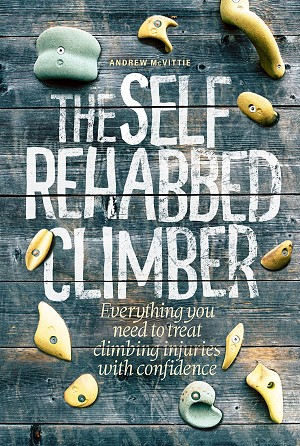
Book info

If your rehab doesn't finish by being as challenging as your training, how are you going to get back to performing?
The book provides a framework that places you and your symptoms at the centre of your rehab. It gives the knowledge you need to perform the basics well and the confidence to self-manage the rehabilitation process. It will help you listen to your body, translate what it is telling you and adapt your treatment accordingly.
You are provided with an easy-to-understand, flexible framework for self-rehabilitation through the ups and downs of some of the most common climbing injuries and niggles:
You will learn about yourself in order to manage your own rehabilitation with a flexible, sport-specific framework. It provides the knowledge to give you the confidence to self-manage your rehab process, whilst being easy to understand and follow. It will help you listen to your body, translate what it is telling you and adapt your treatment. This is the key to successful rehab.
Each injury is broken down into stages, with guidance given on where your treatment entry point is, how to know you're ready to progress to the next stage, how to continue to climb with the injury and what likely caused it in the first place.
The principles learned can be taken forward and used in your training and any future injuries.
The Self-Rehabbed Climber covers these common injuries:
- A2 Flexor Pulley Sprain
- Golfer's elbow
- Sub-Acromial pain (previously known as impingement)
- Long-Head of Bicep
- Rotator Cuff related pain
- Wrist injury (TFCC)
- Mid-back/postural pain
- Hamstring/adductor injury from heel hooking
All the exercises are described, illustrated with colour photographs and supported with online videos where necessary.
Author info

Andy is a passionate climber with more than 25 years climbing experience all over Europe and further afield. Despite fell-running, ultra-marathons and road cycling interrupting things occasionally climbing has been a constant in his adult life. He loves all aspects of climbing from indoors to alpinism. But is currently in a traditional climbing phase.
He has coached climbers for more than 15 years; from beginner's sessions, a competition squad to performance rock sport climbing holidays.
Andy has developed and delivered injury reduction workshops, treatment workshops and written articles for UKClimbing.com and Climber magazine.










Comments
Nice one Andy, well done it looks great.
The title is wrong: climbing instead of climber
cheers, fixed
Looks really good, Andy. Such effort deserves support - order is in.
Well spotted Suncream, thanks.
Thanks Tyler and Derek. Fingers crossed it hits the right spot for people.